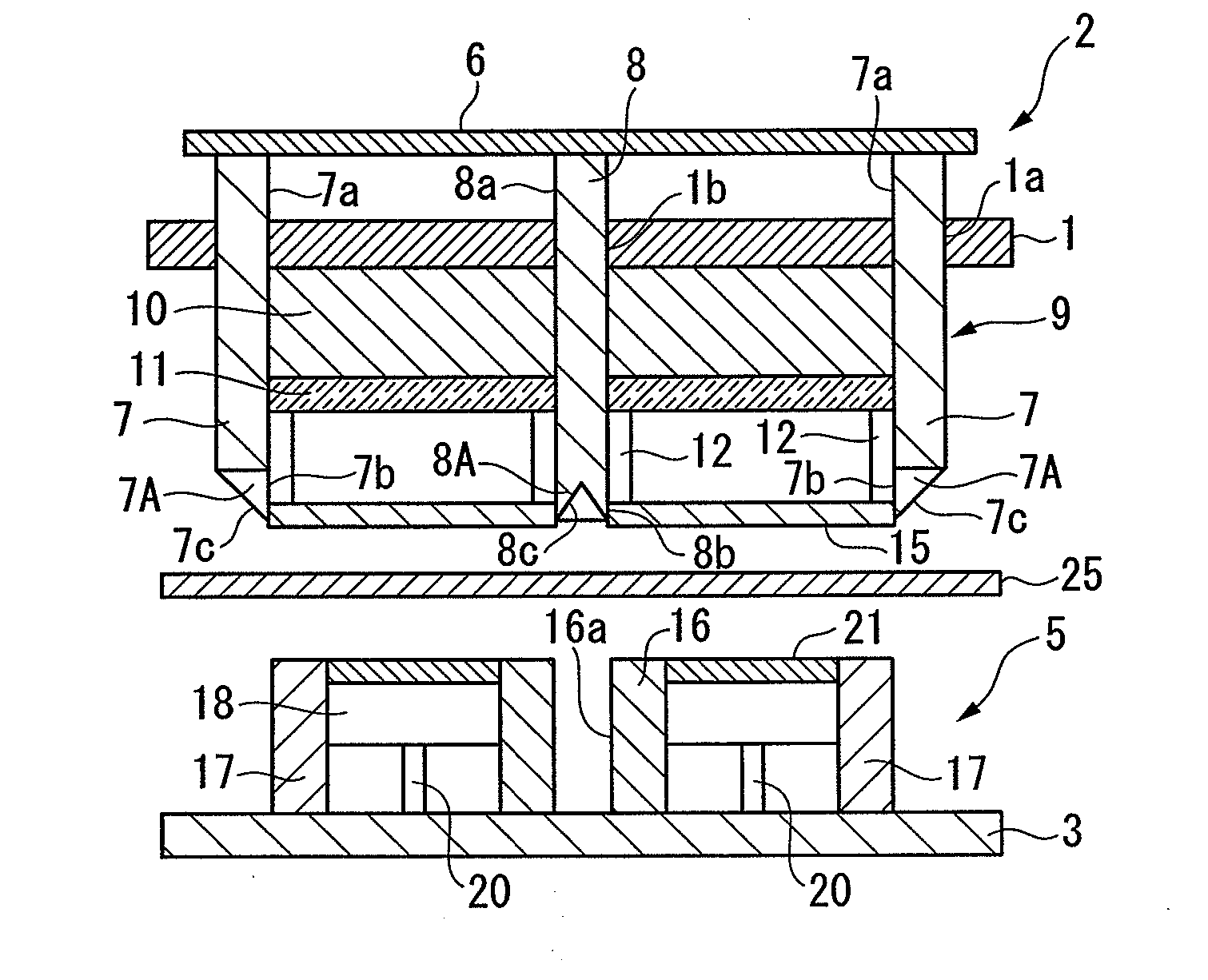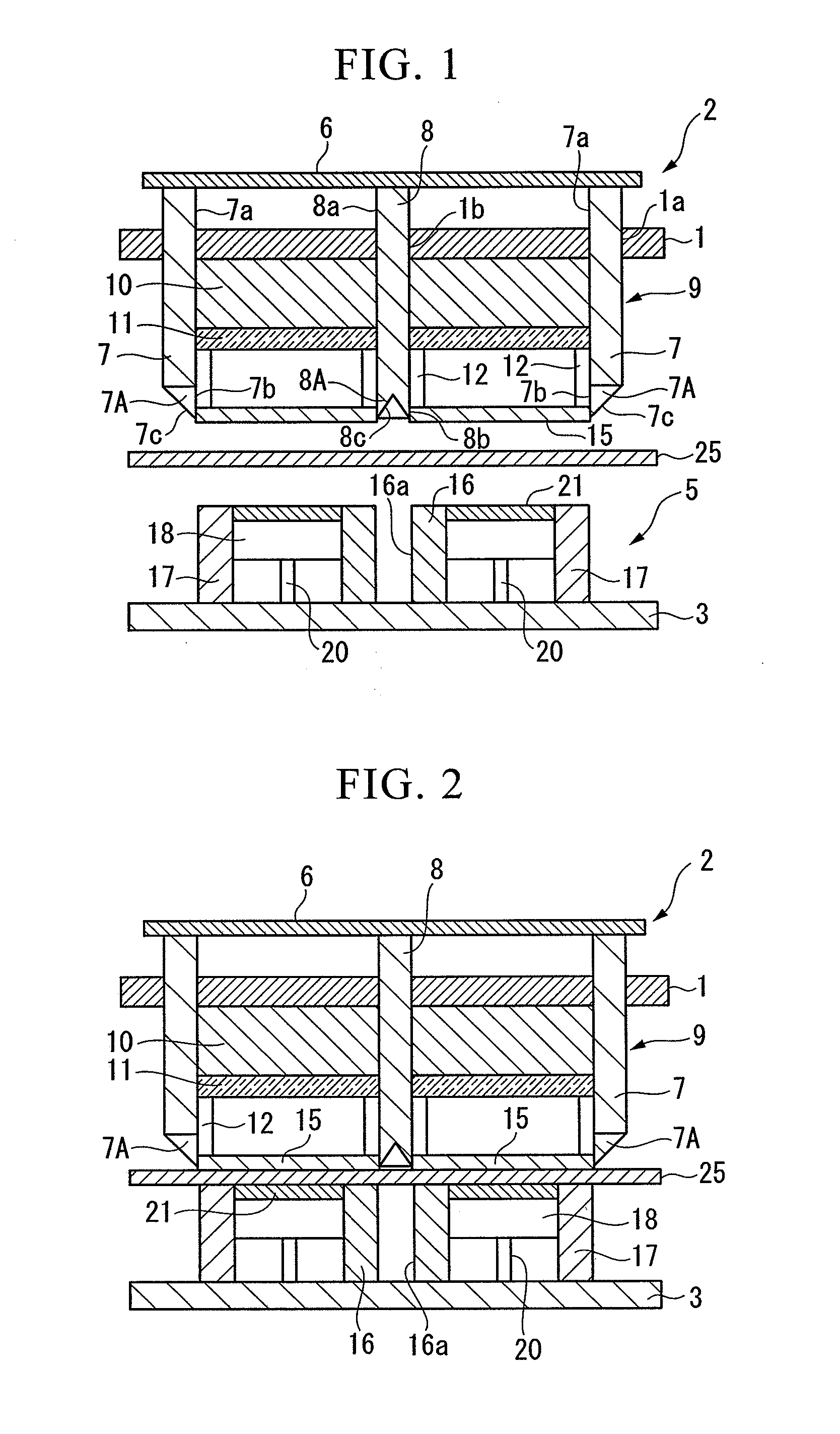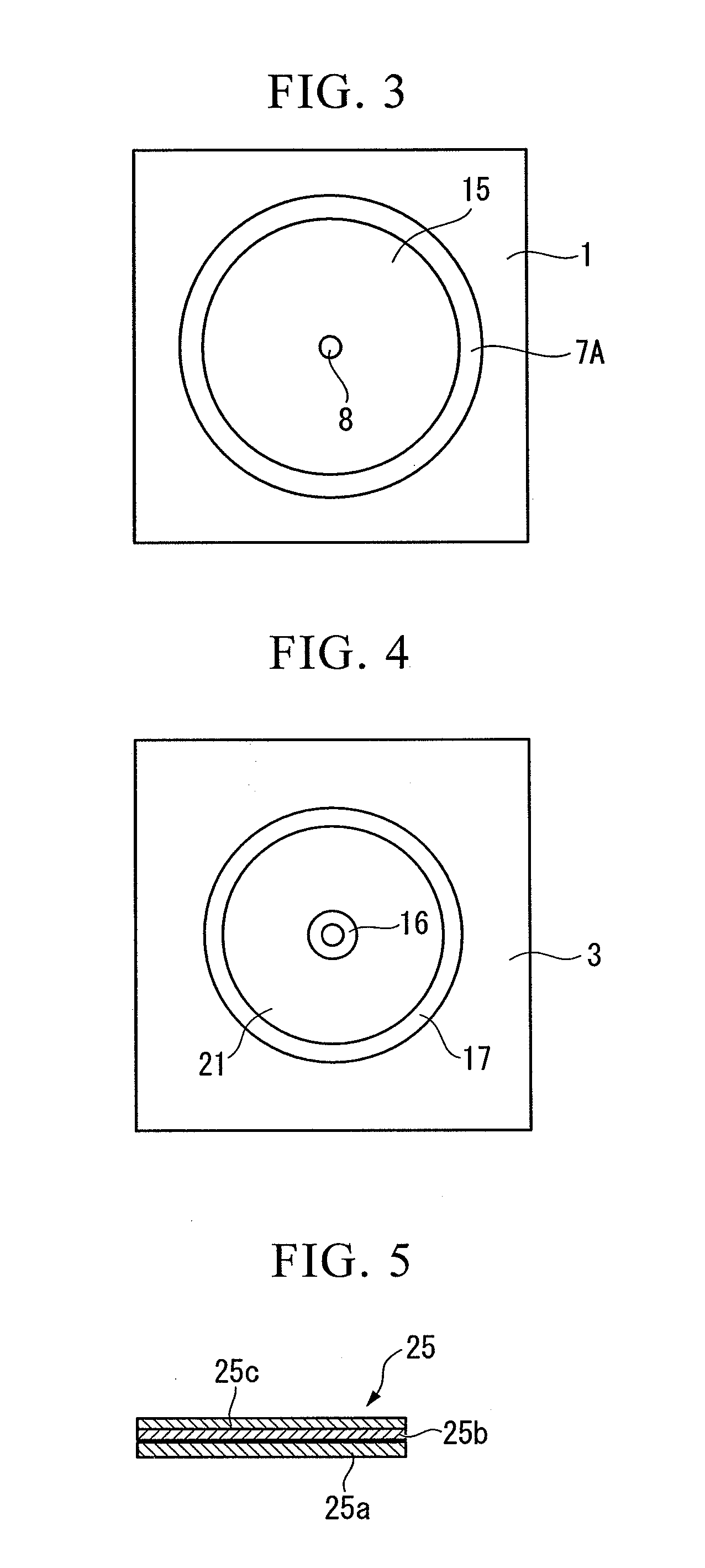Method of manufacturing magnetic recording medium, and magnetic recording and reproducing apparatus
a technology of magnetic recording medium and reproducing apparatus, which is applied in the field of manufacturing magnetic recording medium and magnetic recording reproducing apparatus, can solve the problems of easy snr damage, decrease in bit error rate, and improve recording density, and achieve high recording density and high productivity
- Summary
- Abstract
- Description
- Claims
- Application Information
AI Technical Summary
Benefits of technology
Problems solved by technology
Method used
Image
Examples
examples
[0171]Laminated films A to F were prepared by applying a UV curable resin indicated in Table 1 onto a hard film indicated in Table 1, followed by drying under adequate conditions. The constitutions of the films A to H are shown in Table 1.
[0172]A mother stamper was prepared by forming an uneven concentric pattern on the surface of a doughnut shaped disc having a thickness of 0.3 mm, an inner diameter of 16 mm and an outer diameter of 63.5 mm and made by Ni electroforming, the pattern in which the height difference between a convex portion and a concave portion was 80 nm, the width of the convex portion was 120 nm and the width of the concave portion was 80 nm, and the mother stamper was set by making the patterned surface to face upward. Each of the laminated films A to H prepared in the above-mentioned manner was cut into a long shape with a width of 70 mm and was set by making the surface to which an epoxy acrylate solution has been applied to face downward.
[0173]After fastening t...
PUM
| Property | Measurement | Unit |
|---|---|---|
| width | aaaaa | aaaaa |
| size | aaaaa | aaaaa |
| wavelength | aaaaa | aaaaa |
Abstract
Description
Claims
Application Information
 Login to View More
Login to View More - R&D
- Intellectual Property
- Life Sciences
- Materials
- Tech Scout
- Unparalleled Data Quality
- Higher Quality Content
- 60% Fewer Hallucinations
Browse by: Latest US Patents, China's latest patents, Technical Efficacy Thesaurus, Application Domain, Technology Topic, Popular Technical Reports.
© 2025 PatSnap. All rights reserved.Legal|Privacy policy|Modern Slavery Act Transparency Statement|Sitemap|About US| Contact US: help@patsnap.com



